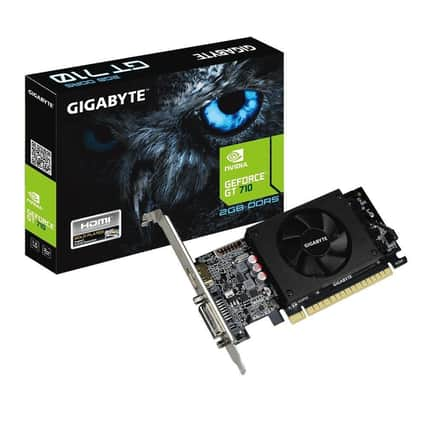Why even a cheap graphics card is better than none at all


This means that unlike laptops, which are designed to be agile and ergonomic, they are ripe for upgrading. A couple of thumbscrews usually allows access to the innards, and so long as you know what you’re doing, memory modules, discs and pretty much everything else can be plugged and re-plugged at will.
Every PC has those components in varying configurations, but not every machine has a graphics card. Most simply have another space where one should go. As this is the module which controls what you see on the screen, you would have thought its inclusion would be a given, but most office machines and many sold for the home rely instead on the central processing unit to divert resources as necessary. Such systems are often badged up as having “Intel graphics” but it’s a euphemism for the absence of a component dedicated to the purpose.
Advertisement
Hide AdAdvertisement
Hide AdThat’s where a standalone graphics card comes in. With its own Nvidia or Radeon processor – a GPU – and memory chip, it can handle the business of getting complex images to the screen with less lag and in better quality.
If you use your PC just to write letters and emails you may never notice the difference, but when you start running photo or video editing programs, watching movies or playing games, a graphics card will transform your experience. Popping one into a mid-market machine is one of the most cost-effective upgrades you can perform, and you can quite easily do it yourself.
Although dedicated gamers often spend hundreds of pounds their graphics, cards, they start at less than £50 with one or two gigabytes of dedicated memory – and even a cheap one is better than none on a PC that is struggling to keep up with what you’re doing.
The card fits into the long, empty slot on the main board of your computer and once screwed into place, provides new ports into which you plug your monitor. In nearly all cases these will be digital connectors which produce sharper, cleaner images than the standard analogue variety. You just need to check which types are on the back of your monitor and make sure they match those on your graphics card.
Advertisement
Hide AdAdvertisement
Hide AdThere is another consideration, though, and that is the power supply built into your PC. Low-end graphics cards are usually happy with whatever wattage you feed them but that is certainly not the case with more exotic models, which are extremely picky about how they are wired up. If you look on the back of your PC, you should find a label near the mains lead that tells you how many watts it consumes; usually this will be between 150 and 450, and you will need to choose a graphics card whose power requirement does not exceed that figure. This is where some PCs prove themselves less upgradeable than others, since those designed to a budget often skimp on power, on the assumption that they will never be customised. You could upgrade the power unit, too, since like every part in a PC it’s a standalone component, but you’re getting into more specialist territory there.
Assuming you have met the power and plug requirements, all you have you do is install the necessary software to make your graphics card take off. And if you’ve invested in a decent one, you can uninstall it when the computer reaches the end of its natural life, and pop it in your next one.
Support The Yorkshire Post and become a subscriber today.
Your subscription will help us to continue to bring quality news to the people of Yorkshire. In return, you’ll see fewer ads on site, get free access to our app and receive exclusive members-only offers.
So, please – if you can – pay for our work. Just £5 per month is the starting point. If you think that which we are trying to achieve is worth more, you can pay us what you think we are worth. By doing so, you will be investing in something that is becoming increasingly rare. Independent journalism that cares less about right and left and more about right and wrong. Journalism you can trust.
Thank you
James Mitchinson
Comment Guidelines
National World encourages reader discussion on our stories. User feedback, insights and back-and-forth exchanges add a rich layer of context to reporting. Please review our Community Guidelines before commenting.